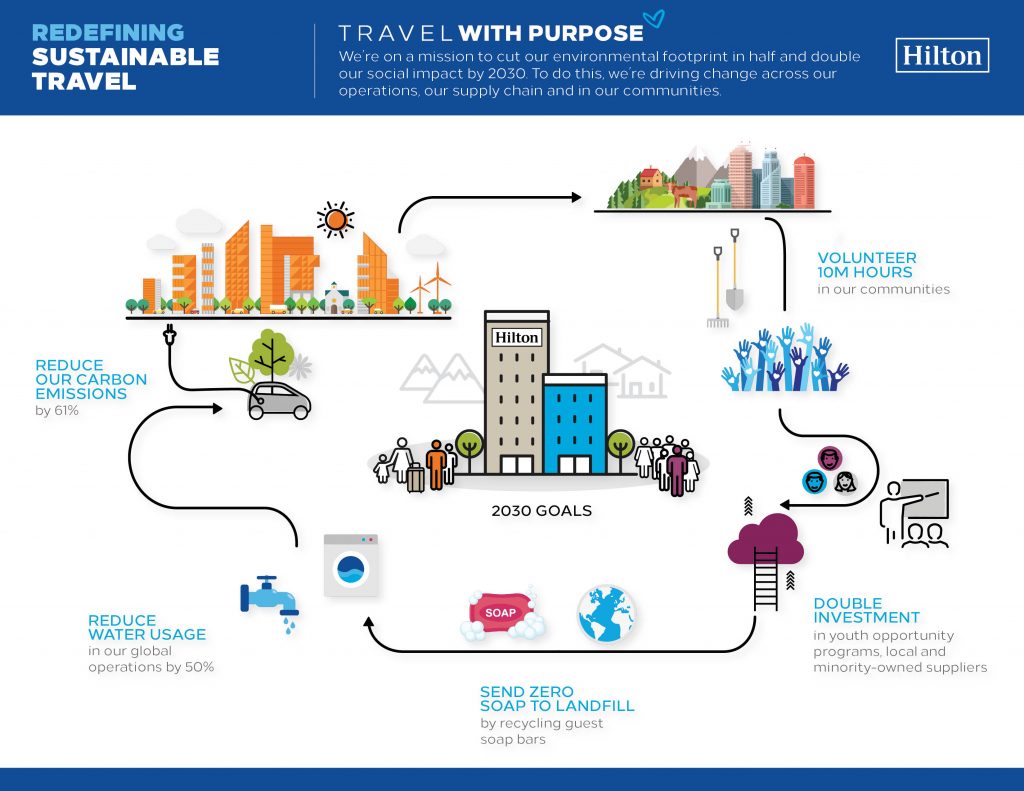Hilton on Wednesday announced it plans to cut its environmental footprint in half, with an ambitious plan to reduce its carbon emissions 61% by 2030.
That plan is markedly opposed to U.S. President Donald Trump’s stance on the Paris Climate Agreement, with the U.S. ultimately being the only United Nations country to back out from the agreement, which calls on nearly 200 countries to voluntarily curb greenhouse gas emissions.
In the past, Hilton CEO Christopher Nassetta has come to Trump’s defense, such as in January 2017 when he defended the U.S. president’s hardline stance on trade.
“Our environmental efforts were in place before the Paris Climate Agreement and our environmental efforts are going to continue regardless of what government here or governments anywhere do,” said Hilton head of corporate responsibility Max Verstraete.

The initiative (which Verstraete said was in the multi-million dollar range) also includes reducing water consumption and produced waste by 50%, removing plastic straws from managed properties, and sustainably sourcing meat, poultry, produce, seafood and cotton.
“It is an ambitious target but I’m optimistic that we can get there because I know the strength behind this company,” said Verstraete. “I know that we have leaders who understand this is a priority for our business.”
Verstraete said the company plans to achieve that target via its investment in a measurement calculation implemented property-wide since 2009 that reports the environmental impact at each of Hilton’s more than 5,300 hotels. Since 2008, the company claims it has reduced its carbon emissions and waste by 30%, and energy and water consumption by 20%, saving more than US$1 billion in operating efficiencies.
Hilton has also vowed double the amount it spends with local and minority-owned suppliers and double its investment in programs to help women and youth around the world: part of the company’s larger Travel with Purpose initiative first launched in 2011.
